Giraffes are more than tall browsers with a quirky walk.
They are deeply connected to the land they roam – and understanding their habitat is key to understanding the species itself.
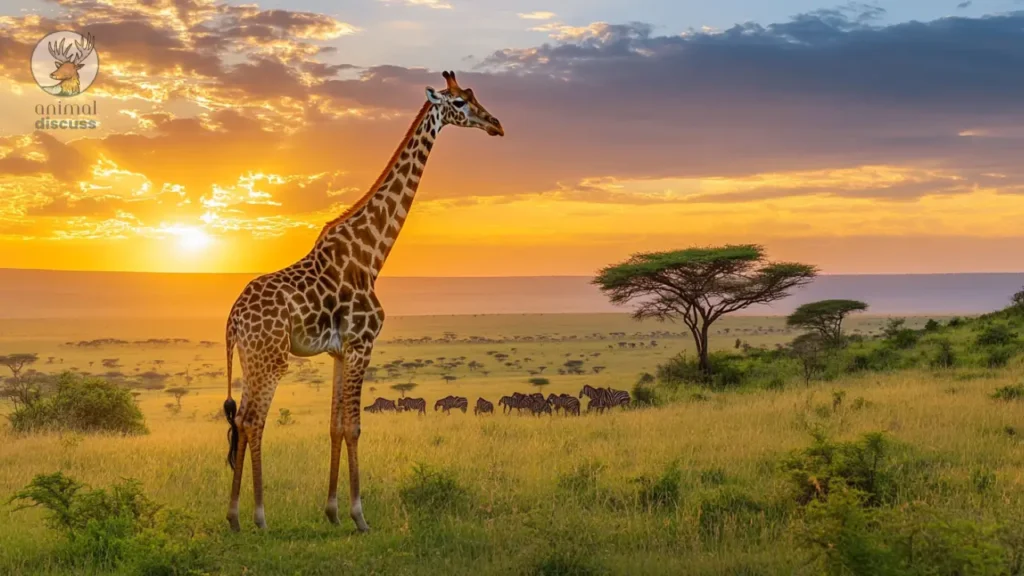
So, if you’re curious about how giraffes choose their homes, adapt to extreme environments, and survive human pressure, you’re in the right place.
Let’s break it all down.
Where Do Giraffes Live?
Giraffes live exclusively on the African continent.
But it’s not as simple as saying “Africa.” Their presence is scattered across different zones, ecosystems, and countries.
You’ll find them in East Africa, Southern Africa, and parts of Central and West Africa. But they don’t live in dense rainforests or deserts.
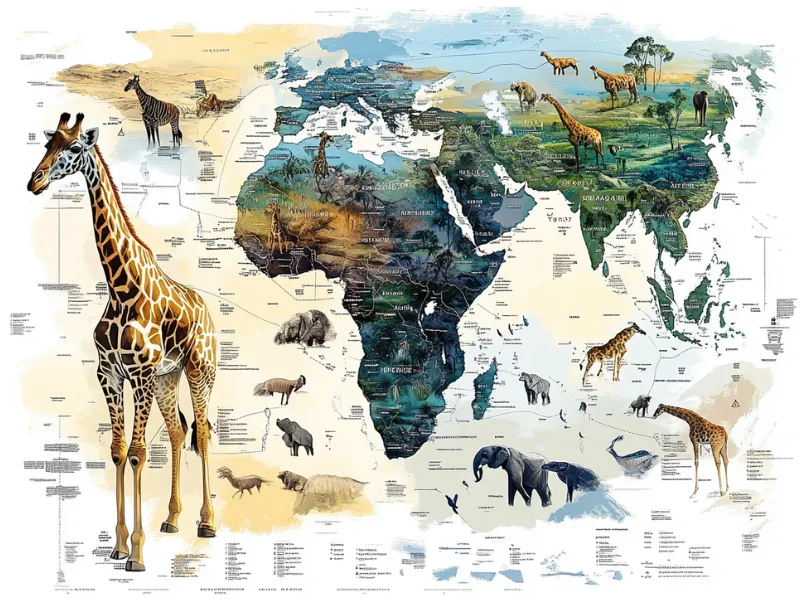
Instead, they stick to open areas where they can spot predators and access tall vegetation.
Here’s a closer look at giraffe distribution:
- Eastern Africa: Kenya, Tanzania, Uganda
- Southern Africa: Botswana, Namibia, South Africa, Zimbabwe
- Central & West Africa: Chad, Cameroon, and historically in Nigeria
Their range is wide but fragmented. Human expansion has carved their territory into smaller pockets.
And that changes how giraffes live.
Want to learn more? Check out our full giraffe overview guide.
Types of Giraffe Habitats
Giraffes aren’t picky, but they are strategic.
They seek out environments that give them visibility, access to browse, and room to move.
The most common giraffe habitats include:
- Savannas: Open grasslands with scattered trees. Ideal for spotting predators from a distance.
- Woodlands: Acacia-dominated regions with seasonal water access. Giraffes thrive here.
- Dry shrublands: Arid zones where food is sparse, but competition is lower.
- Floodplains and riverine forests: Where certain subspecies browse on water-loving trees and shrubs.
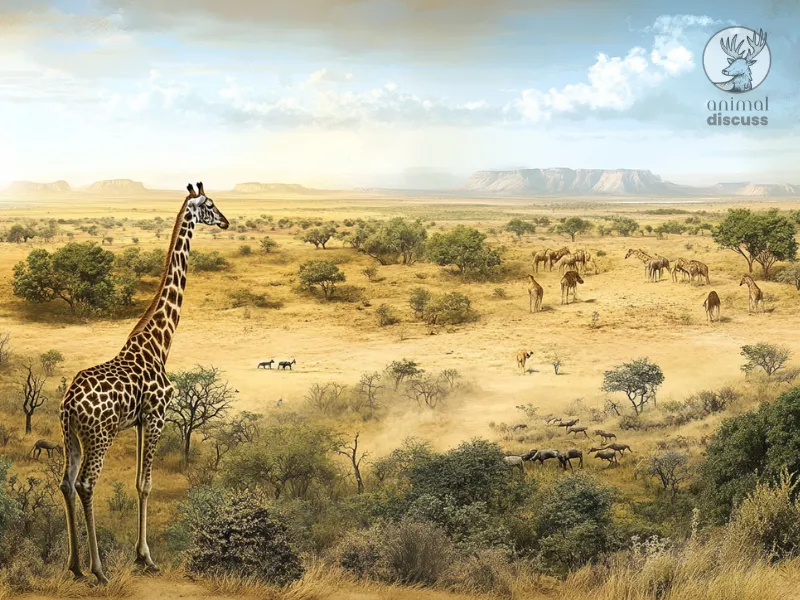
They aren’t found in rainforests or deserts because those environments either block visibility or lack food.
And since giraffes need to stay alert while feeding, visibility is as critical as vegetation.
Climate and Environmental Conditions
Giraffe habitats aren’t just about the trees—they’re shaped by climate.
Temperature, rainfall, and seasonal shifts directly influence giraffe movement and survival.
Most giraffe habitats fall into semi-arid to sub-humid zones.

These regions experience:
- Average temperatures between 20–35°C
- Rainy seasons followed by extended dry periods
During rainy months, giraffes stick to greener patches.
In the dry season, they roam longer distances, following shrinking water sources and leaf-rich trees.
They’ve adapted to survive heat and drought, but even giraffes need relief from extreme conditions.
Giraffe Habitat by Subspecies
Each giraffe subspecies occupies a slightly different habitat type.
Their range and environment often define their appearance, feeding strategy, and risk level.
Here’s how habitats differ by giraffe subspecies:
| Subspecies | Main Habitat Type | Countries Found |
| Masai Giraffe | Savanna & open woodland | Kenya, Tanzania |
| Reticulated Giraffe | Semi-arid shrublands | Northern Kenya, Somalia |
| Southern Giraffe | Woodland & bushveld | Namibia, Botswana, South Africa |
| Northern Giraffe | Sparse woodland & Sahelian scrub | Chad, South Sudan, Central African Rep. |
| Nubian Giraffe | Riverine forests & savanna | Ethiopia, South Sudan |
| Kordofan Giraffe | Dry savannas & scattered woodlands | Cameroon, Chad, Central African Republic |
Each subspecies has evolved to match the conditions of its native terrain.
So, protecting their habitat means understanding these regional differences.
What Giraffes Need in Their Habitat?
There’s more to a giraffe’s home than trees and open space.
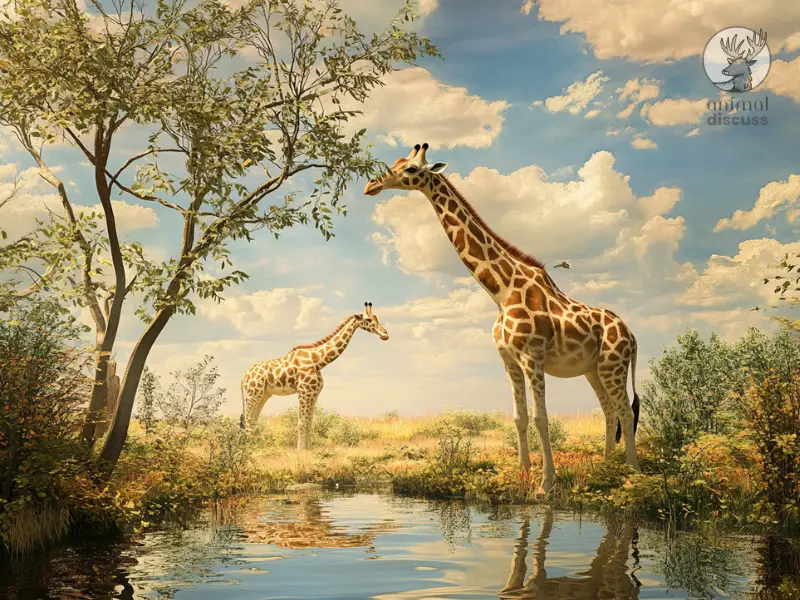
Here’s what makes a habitat giraffe-friendly:
- Tall Browse Trees: Especially acacias, terminalia, and commiphora
- Seasonal Water Sources: Rivers, rain-fed pans, or even dew-rich foliage
- Low Predator Density: Or at least good visibility to detect them
- Calving Zones: Open areas with soft ground, away from large predators
- Movement Corridors: Uninterrupted routes for seasonal migration and feeding
In short, giraffes need a mix of height, safety, and nutrition to thrive.
Without that combination, populations struggle.
Threats to Giraffe Habitat
The modern world is closing in on giraffe territory.
From bulldozers to bushfires, their habitat is under siege.
The top threats include:
- Agricultural expansion: Land cleared for crops and cattle reduces giraffe range
- Urban development: Roads and buildings fragment natural movement corridors
- Deforestation: Trees cut for firewood or charcoal remove giraffe food sources
- Climate change: Alters rainfall patterns, increasing drought and affecting tree growth
And then there’s fencing.
Large-scale fencing cuts off giraffe migration routes, forcing them into smaller and riskier areas.
Add poaching to the mix, and even a “safe” area becomes dangerous.
Conservation Efforts for Giraffe Habitats
Luckily, not all hope is lost.
Across Africa, governments and NGOs are stepping in to protect what’s left.
Key strategies include:
- Protected areas: National parks and reserves where giraffes can roam without interference
- Habitat restoration: Replanting native trees, removing invasive species, and reconnecting movement corridors
- Translocation projects: Moving giraffes from unsafe zones to safer, well-managed habitats
- Community engagement: Involving local people in giraffe-friendly land use
Groups like the Giraffe Conservation Foundation (GCF) are leading the charge.
By working with local and international partners, they’re reversing habitat loss in key regions.
But the clock is ticking.
Human-Giraffe Interaction in Shared Landscapes
Not all giraffes live in protected parks.
Many share landscapes with humans – especially in dry rangelands used for cattle.
This creates a tension.
When done right, giraffes and people can coexist.
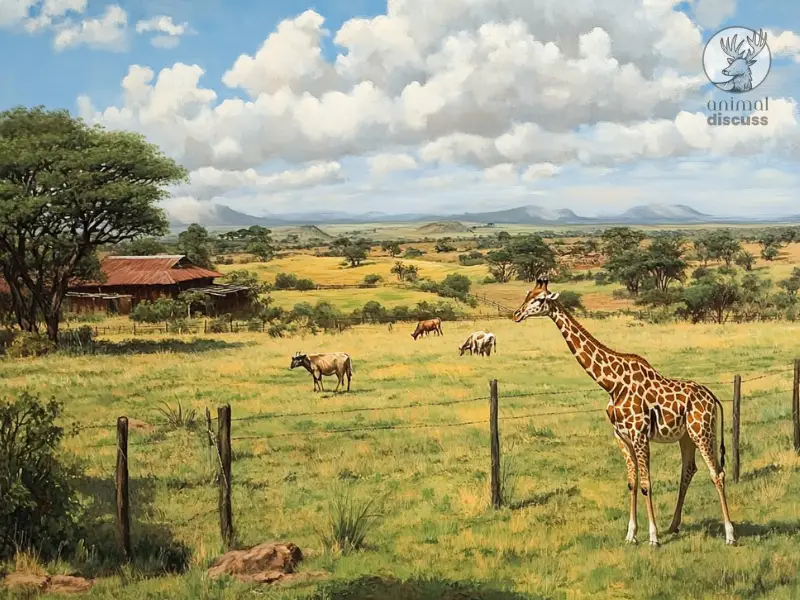
Traditional pastoral systems often allow giraffes to browse without conflict.
But when grazing intensifies or land is fenced off, giraffes lose out.
That’s why sustainable coexistence models – like community conservancies—are gaining traction.
They allow both livestock and wildlife to share resources without pushing each other out.
How Giraffe Habitat Influences Their Behavior?
Habitat isn’t just where giraffes live – it shapes how they live.
In dense woodlands, giraffes tend to be more solitary and spread out.
In open savannas, they form larger groups, especially near waterholes.
Their daily routines also shift:
- In hotter climates, giraffes feed early and late, avoiding midday heat
- In fragmented areas, giraffes take longer, indirect routes to avoid human activity
Behavior adapts to habitat.
And when habitat disappears, behavior changes too—often for the worse.
Giraffe Habitat FAQs
Here’s a lightning round of common questions people ask about giraffe habitats.
Final Thought
If giraffes are to survive the next century, habitat will be the battlefield. Understanding where they live is the first step toward protecting how they live.
And if you want to go deeper into giraffe movement, social behavior, and communication, check out our full guide on giraffe behavior next.

